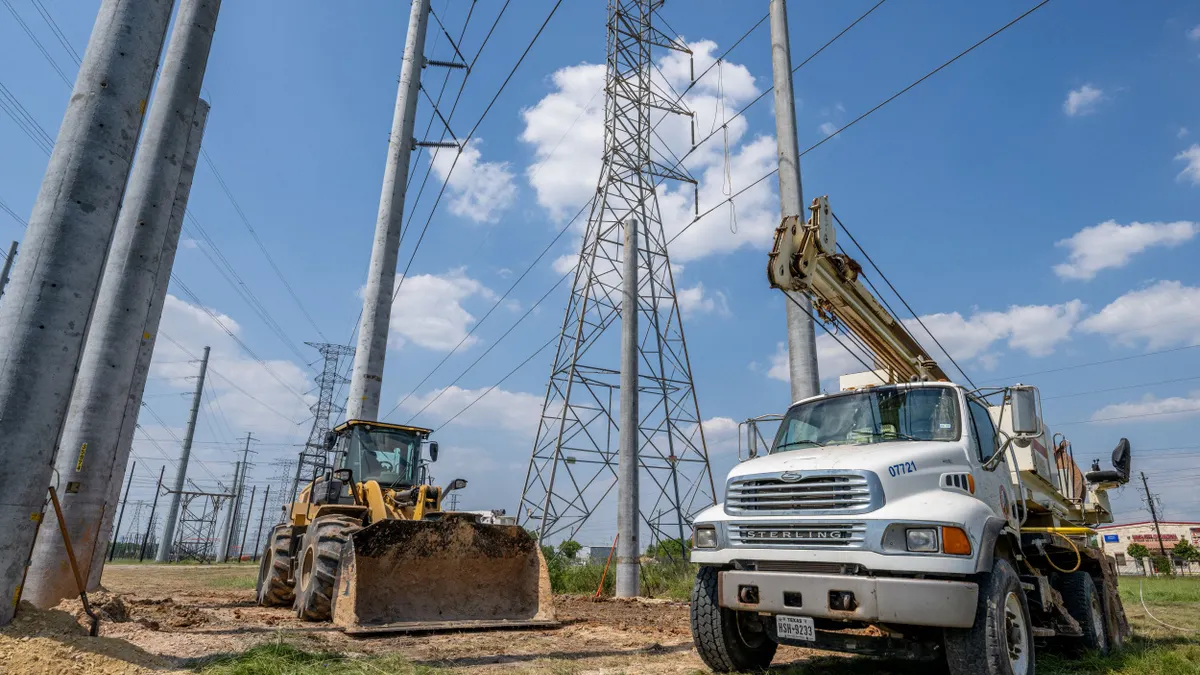There is a simple way to resolve the solar war in Hawaii and all the stakeholders in the struggle have called for it in one way or another.
The fight is over what solar owners will be paid for the electricity their systems send to the grid. Most agree today’s net energy metering (NEM), which remunerates at the retail electricity rate, no longer works with solar on 12% of the state’s roofs, penetration increasing rapidly, and residents paying the nation's highest electric rates.
The solar wars began when advocates clamored for the state's electric utilities to increase the speed of the transition to distributed solar and the utilities pushed back, arguing for a change in the NEM policy.
The urgency of settling the struggle was highlighted by Moody’s recent downgrading of Hawaiian Electric Industries (HEI), parent of the state’s dominant electricity providers, from stable to negative.
Not only that, but recent subpoenas of NextEra Energy CEO Jim Robo and HEI CEO Connie Lau by the state’s Consumer Advocate (CA) illustrate a growing apprehension in the state that the proposed $4.3 billion NextEra-HEI merger will lead to common ground on solar issues.
The simple solution? Restructure rates so that everybody pays and gets paid the right price for the electricity they buy and sell, a new study suggests.
That common ground is hinted at in the opposing stakeholders’ recent filings in the Hawaii PUC's Distributed Energy Resources (DER) docket. Both the Hawaiian Electric Companies (HECO) — the state’s biggest electric utility — and the Joint Parties — representing the solar industry, environmental advocates, and indigenous Hawaiians — agreed a new rate structure is key.
Now both HECO and one of the Joint Parties have endorsed a call for time variable pricing in a new report, "Efficient Design of Net Metering Agreements in Hawaii and Beyond," from the University of Hawaii Economic Research Organization (UHERO).
“Pricing is key. If you don’t get real about variable pricing and allow prices to vary throughout the day in a flexible way, associated with the true value of the electricity, you get a lot of inefficiency,” explained report co-author and UHERO Associate Professor of Economics Michael J. Roberts.
HECO’s primary focus remains on the cost shift it sees in the state’s NEM policy that, the utility believes, becomes a subsidy for rooftop solar.
The UHERO paper “speaks for itself,” according to HECO Spokesperson Peter Rosegg. He specifically endorsed its observation that “in time, as both utility-scale and residential solar installations grow, midday electricity is likely to become less valuable than evening or nighttime electricity, so it makes little sense to apply the same rate for electricity sent to the grid as drawn from it.”
This is consistent with a proposed time-of-use (TOU) pilot program proposed in HECO's June 29 Final Statement of Position (FSOP) for phase 1 of the DER proceeding.
In the Joint Parties’ DER filing, they also called for moving ahead with a statewide rate restructuring that includes residential TOU pricing.
In essence, the Joint Parties want to move faster and impose more far-reaching TOU rates, but both are targeting the similar solutions.
The UHERO paper points in the right direction, agreed Program Director Richard Wallsgrove of Blue Planet Foundation, one of the Joint Parties.
“We will need a much smarter time-of-use rate structure," he said. "Everybody agrees we have to price all the electrons on the grid more smartly.”
“We need to go to variable pricing and it shouldn’t bankrupt the solar installers and it should only make it easier for utilities,” Roberts said. “This is the place of common ground, not a place that picks one side or another.”
Pricing should not be technology-specific, but an option for customers regardless of their behavior, agreed James Mandel, a Principal at the Rocky Mountain Institute and co-author of a recent series of reports on the economics of load and grid defection.
“The best pricing is pricing that reflects utility costs,” he said.
Three ways to a long term solution
The UHERO paper’s complete long term solution is “three simple ideas to achieve a more efficient and equitable electricity system that is particularly relevant for systems with a lot of variable renewable supply”:
- To make the system more efficient, “all households and businesses should have an option to buy or sell as much electricity as they like at a price equal to the marginal cost of electricity production.”
- The utility’s fixed costs of grid infrastructure not paid for by such rates “should be spread as widely as possible in order to limit grid defection and improve fairness.”
- If there is an agreed need for incentives to meet Hawaii’s ambitious 100% renewables by 2045 mandate, they “should be paid via more transparent mechanisms” than NEM.
An extreme example of the waste from current pricing is what is happening on Maui, Roberts said. The island’s wind generation often exceeds the system’s ability to use it, even with Hawaii’s aging and inflexible thermal plants cycled down as low as possible. The turbines are therefore turned away from the wind, wasting already-bought electricity, while Maui residents continue to pay over $0.30 per kWh for their electricity and some four times the national average, according to Roberts.
Editor's Note: Although the estimated cost of wind curtailment was high for most of 2013 and 2014, the most recent data from MECO shows that the cost of curtailment was negative for the first six months of 2015 due to a decline in the price of oil. The data also shows that there was more curtailment through the first six months of this year than last.
Because MECO has a fixed-price contract with the wind provider and oil prices are lower than they were last year, the utility has to pay a high price for the wind in 2015 if they don't curtail it, Roberts explained.
"While the contract price of the electricity is a big number, once the windmills are in place, the marginal cost of the electricity generated is essentially zero," he said. "When they don’t buy the electricity from the windmills, it just gets thrown away."
Solar is approaching a level, the paper warns, where similar curtailment of residential system owners could be an issue.
“On Maui, the marginal cost for the wind-generated electricity is nearly zero but the price signal doesn’t drop,” explained UHERO Associate Professor of Urban and Regional Planning and paper co-author Makena Coffman. “That is the inefficiency. If the price dropped, that would be a signal to customers and they would respond over time by shifting the load.”
“It would be better to use the electricity from the wind when it is blowing and there must be people who would use it,” Roberts said. “You could make that happen naturally by letting prices vary.”
Implementing marginal-cost pricing does present challenges because an efficient market would see prices varying day to day and hour to hour, the paper explains. It would require a potentially costly investment in smart meters. There are also potential challenges in “basic measurement and regulation of what constitutes true marginal cost.”
UHERO therefore proposes three interim tariff solutions, all based on the marginal cost of power. None include other costs in the volumetric rate, so solar customers would not avoid paying fixed costs.
One is for any type of customer. It would provide “hourly prices that reflect the continuous variation in supply and demand of electricity.” It would condition customers to price signals. It would also “open a door to innovative ideas for storing electricity or otherwise shifting loads over time.”
Another is a flat-rate tariff. It would be “based on the average marginal cost for the overall power system.” It is designed for the “risk-averse” and "offers a less volatile option for customers who fear a ‘bill surprise’ from hourly pricing.” Bills to customers using it would be similar to current bills.
Finally, a time-of-use (TOU) tariff could have “flat rates each month that differ between peak, shoulder and off-peak hours.” It would be based on the average marginal cost during these periods. It would incent customers with some interest in load shifting but who want some predictability.
Fixed costs and grid defection
The challenge in accurately allocating fixed infrastructure costs may be keeping them low enough to prevent grid defection, Roberts and Coffman said.
Even on the mainland, demand charges already make the high cost of solar-plus-storage practical in some commercial and industrial applications. With a fixed charge added to Hawaii’s high electricity rates, a residential solar plus storage system’s expense would not necessarily be prohibitive, even in the absence of solar incentives.
If large numbers of utility customers did so, “more fixed costs would be pushed onto non-solar customers. And it would render useless the presumably valuable transmission and distribution network connecting homes to each other and to the utility,” the paper explains.
Investments in grid infrastructure are already committed over years or even decades. The utility needs to recoup these sunk costs. The current rate structure limits the contribution for them from an increasing number of solar owners but imposing a fixed charge could drive grid defection which “is uneconomical from a social perspective” and would make the problem worse.
“Fixed costs probably should be recovered through some combination of fixed monthly fees or general tax revenues,” the paper reports. “Options include a flat charge on every customer’s bill, demand charges based on peak use from the grid, a small adder or percentage markup on per-kWh rates, or possibly a one-time Legislature-funded markdown of sunk costs.”
Roberts and Coffman acknowledged that these ideas are a summary of uncertainty about how pay for the system without driving defection.
“This problem cannot be solved through a simple restructuring of rates,” the paper observes.
“The fixed cost component should be dealt with other than the most recent proposals and the idea of how to spread these things out is something we all need to start talking about,” Coffman said.
The idea of using tax credits in place of NEM is not necessarily ideal, Coffman added, but “tax credits are a more transparent mechanism and are less regressive because the income tax structure is more progressive than by a rate structure that tends to be regressive.”
Back to the cost shift
On four points, the UHERO study is consistent with MIT’s The Future of Solar Energy, according to HECO’s Rosegg. While solar advocates found MIT's assessment to be a too narrowly economic approach, utilities generally accepted it.
Rosegg quoted passages from the MIT paper and the UHERO paper demonstrating that they both find:
- Cost shifting to non-PV customers exists
- Subsidies are not necessary, but even if subsidies are deemed to be needed, they shoud be more transparent
- At certain levels of PV penetration, costs actually increase
- Distributed solar PV can’t currently be curtailed, which causes pricing and operational problems
“When single bi-directional standard meters are used, volumetric network charges result in customers with PV generators partially avoiding network charges, leaving other network users and/or distribution company shareholders to assume higher costs,” Rosegg quoted from the MIT paper.
And “under current net energy metering agreements, when a solar customer provides their own power, they don’t pay the fixed cost component for each kWh they produce. Under a revenue decoupling rule, those costs are shifted to households and businesses without rooftop solar,” he cited from the UHERO paper.
Until solar in Hawaii reached its current high penetrations, Coffman explained, it “was displacing high cost units’ generation so the idea that you got back the retail rate was not too far off from efficient but with more and more solar and eliminating the big peak, that starts to change.”
Roberts is urgently pushing for a complete rethinking of the rate structure. He wants to move completely away from debates about retail rate and wholesale rate remuneration. His message is simply that remuneration for solar should be what the value of it is to the market at the time it is sent to the grid.
“Anyone can buy or sell electricity from the grid and the price they pay or the price they get is the marginal cost,” he said.
With changes in customer behavior and in generation, “it is not clear whether that marginal cost pricing would create surplus generation or not cover all the costs of generation,” he explained. “To the extent that doesn’t cover all costs, we will have to deal with it.”
Is the cost of service the missing link?
There is one reason this thinking and every aspect of the debate “falls short” despite the broad agreement on the need for variable pricing, Wallsgrove said.
“We don’t have a cost of service study for Hawaii that tells what the magnitude of that problem is,” he explained. “We need something more definitive on that before we start making policy decisions.”
Such a study of the full array of costs and benefits, Wallsgrove explained, would quantify the ratepayer impacts that arise from expanding distributed generation and distributed energy services. “Where the "cost-shift" rhetoric fails, a cost of service study would get at the heart of the fairness questions.”
Roberts was adamant about what needs to come first. “You need to get the variable pricing correct and then you can deal with distribution issues in other was.”
Advocates, especially utilities and solar companies, fail to think about the system as a whole and don’t understand “basic economics,” he said. “These are really important issues and shouldn’t be turned into a political shouting match.”
With an efficient price system, he added, “all the hand-wringing goes away.”
Solar generation should not be curtailed to keep thermal generation in place but if the grid doesn’t need the solar because it is already running on 100% renewables, “it should be priced accordingly because that is how we will get our next round of innovative solutions,” Wallsgrove said.
The UHERO authors say time varying rates should be based on the marginal cost, which is economic thinking, he added. But rates are more than just a way to generate revenue and recover costs.
“They can shift the system," Roberts said. "Maybe we shouldn’t take the simplistic approach of pricing energy based on marginal cost but instead price it on the kind of system we want to build.”






















